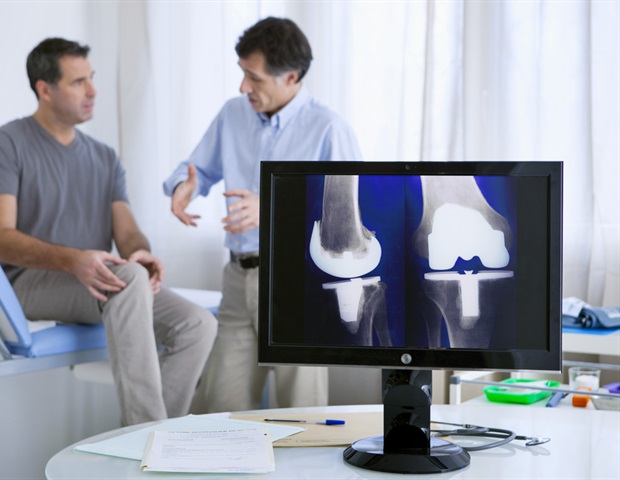A study by Dr. Geoffrey Westrich and colleagues at Hospital for Special Surgery (HSS) found knee replacement performed with robotic assistance led to a lower complication rate in the first three months following surgery. The research, which appeared in the October issue of Arthroplasty Today, also found that the nationwide use of a robotic system in knee replacement increased more than 2,000% from 2010 to 2018.
The use of computer-assisted navigation and robotic assistance for total knee replacement has increased tremendously and shows no sign of slowing down. Among American Association of Hip and Knee Surgeons attending the 2020 annual meeting, 77% of respondents indicated that they used technology in their surgical cases. The most common reason they cited was to increase surgical precision.”
Dr. Geoffrey Westrich, Hospital for Special Surgery (HSS)
Dr. Westrich and colleagues set out to update the literature on technology-assisted knee replacement trends. They also sought to review the 90-day complication rate requiring readmission to the hospital after surgery. “Although both computer-assisted navigation and robotic-assisted knee replacement have demonstrated increased precision with component positioning and alignment, it is unclear if this translates into improved clinical outcomes,” Dr. Westrich explained.
Using a large national database, the researchers compiled information on more than 1.3 million patients who underwent a primary, elective total knee replacement between 2010 and 2018. Patients were divided into three groups: those who had conventional surgery; individuals who had technology-assisted knee replacement with computer navigation; and patients who had robotic-assisted joint replacement surgery.
Dr. Westrich and colleagues found that the use of robotic-assisted knee replacement grew considerably from 2010 to 2018, with an increase in utilization nationwide of more than 2,200%. The largest increase took place between 2016 and 2018.
Robotic-assisted surgery also led to a lower complication rate. “Robotic-assisted surgery had significantly lower odds of all-cause 90-day complications requiring readmission to the hospital, with a rate of 1.57%, compared to conventional knee replacement, which had a complication rate of 2.55%,” Dr. Westrich noted. “The data imply that for every 102 patients treated with robotic-assisted knee replacement, one readmission may be avoided.”
Joint replacement, whether conventional or assisted with technology, is highly successful overall in relieving arthritis pain and improving quality of life, Dr. Westrich notes. “The advantage of the robotic system is that it allows us to customize the procedure for each patient,” he explains. “It enables optimal alignment and positioning of the knee implant, as well as optimal ligament balancing, important to the long-term success of the surgery.”
Several robotic-assisted knee-replacement systems are on the market. Dr. Westrich uses a system known as Mako. Before surgery, a CT scan is taken of the patient’s knee. The scan is then uploaded into the Mako system software, where a 3D model of the joint is be created. The 3D model is used to plan and assist in performing the joint replacement.
In the operating room, the orthopedic surgeon controls a robotic arm that uses computer‐guided mapping software, similar to GPS, integrated into the surgical instruments to position the implant in the knee joint. The digital tracking system constantly monitors and updates the patient’s anatomy and enables the surgeon to make real‐time adjustments to optimize implant placement, alignment, ligament balance and joint motion. This provides each patient with a personalized surgery tailored to his or her individual anatomy.
“With more accurate alignment and positioning, the implant should experience less wear and friction, and it could ultimately last longer,” says Dr. Westrich. He notes that additional studies looking at long-term outcomes will be needed to see if this is the case.
Source:
Journal reference:
Bendich, I., et al. (2021) Trends of Utilization and 90-Day Complication Rates for Computer-Assisted Navigation and Robotic Assistance for Total Knee Arthroplasty in the United States From 2010 to 2018. Arthoplasty Today. doi.org/10.1016/j.artd.2021.08.005.
Credit: Source link



